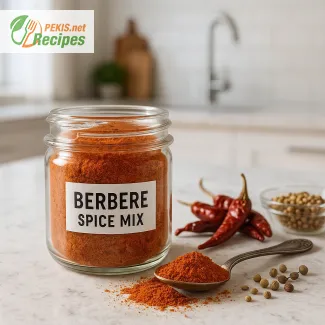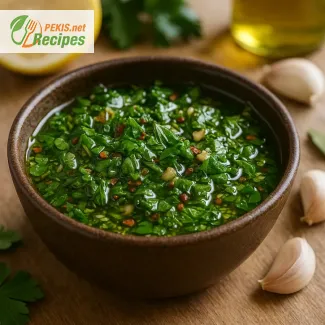
How to Make the Juiciest Pork Chops Without the Bone
A simple and flavorful weeknight dinner your whole family will love
There’s something undeniably satisfying about biting into a perfectly cooked boneless pork chop — the golden-brown crust giving way to a tender, juicy center that melts in your mouth. This classic main course has found its way into home kitchens and restaurant menus alike, celebrated for its versatility, ease of preparation, and the rich, meaty flavor that shines through when cooked with care. Whether you're looking to impress dinner guests or simply serve up a comforting weeknight meal, this boneless pork chop recipe will quickly become a staple in your kitchen.
Boneless pork chops are a favorite among home cooks for good reason. Without the bone, they cook more quickly and evenly, making them ideal for busy evenings. Their lean profile means they absorb flavors beautifully, whether you're marinating them in a tangy yogurt-based brine, searing them in a hot skillet, or roasting them to perfection in the oven. The key lies in the balance of seasoning and cooking technique, ensuring the chops remain moist and tender rather than dry and tough.
What makes this recipe stand out is the thoughtful combination of spices, aromatics, and cooking method that enhances the natural flavor of the pork without overpowering it. A short marinade with ingredients like garlic, fresh herbs, olive oil, and a splash of lemon juice tenderizes the meat while adding layers of complexity. Whether you're grilling, pan-searing, or baking, this adaptable recipe ensures delicious results every time.
Why boneless pork chops are the perfect protein choice
Pork chops are often overshadowed by more popular meats like chicken or beef, but they deserve a place of honor at the dinner table. These boneless cuts are not only affordable but also incredibly versatile. You can prepare them with a variety of herbs, spices, sauces, or side dishes, making them suitable for cuisines ranging from American to Mediterranean, Asian, or Latin-inspired menus.
The boneless cut comes from the loin of the pig, typically the same area as pork tenderloin. This results in a lean yet tender piece of meat that’s excellent for high-heat cooking methods such as grilling, broiling, or pan-frying. Their neutral flavor makes them an excellent canvas for bold marinades and spice rubs.
For those who are health-conscious, boneless pork chops also offer a high-quality protein source that can be part of a balanced diet. With the right cooking method, they can be just as juicy and flavorful as fattier cuts, without the extra calories.
The secrets to juicy, tender pork chops every time
Overcooked pork is a common pitfall, especially with boneless cuts that lack the bone to help retain moisture. But with a few key techniques, you can achieve perfectly cooked pork chops every time. Start by removing them from the fridge about 20 minutes before cooking — this allows the meat to reach room temperature and cook more evenly.
Marinating is another essential step. Even a short 30-minute soak in a simple mixture of olive oil (30 ml / 2 tablespoons), lemon juice (15 ml / 1 tablespoon), crushed garlic, and fresh rosemary can transform your pork from basic to gourmet. Once you’re ready to cook, use a hot skillet to create a golden sear on both sides, then finish the chops in the oven or lower the heat and cover to gently bring them to the perfect internal temperature of 63°C (145°F).
Resting the meat for five minutes after cooking allows the juices to redistribute, ensuring every bite is moist and flavorful. Cutting into your chop immediately after cooking releases these juices, which would otherwise stay locked in for a more satisfying eating experience.
Flavor variations and serving suggestions
The beauty of this recipe lies in its adaptability. You can easily infuse it with flavors from around the world by changing the herbs and spices. Try adding smoked paprika, cumin, or coriander for a Spanish or Moroccan flair. For an Asian twist, swap the lemon juice for rice vinegar, and add a splash of soy sauce and grated ginger.
As for side dishes, boneless pork chops pair wonderfully with everything from creamy mashed potatoes and buttered green beans to roasted vegetables or a crisp salad. In summer, serve them with grilled corn and tomato salad; in winter, opt for rosemary roasted root vegetables and warm grain salads with farro or quinoa.
No matter the season or occasion, boneless pork chops offer a flavorful, satisfying, and protein-packed foundation for any meal. Their simplicity allows the cook's creativity to shine while still delivering a reliable and delicious result every single time. Whether you’re a beginner or an experienced home chef, mastering this recipe will bring joy to your kitchen and your table.
- Tenderize and season the pork chops. Pat the boneless pork chops dry with paper towels. Use a meat mallet if needed to slightly flatten them to even thickness (about 2 cm / ¾ inch). Place them in a shallow bowl or zip-top bag.
- Marinate the meat. In a small bowl, whisk together olive oil (30 ml / 2 tablespoons), lemon juice (15 ml / 1 tablespoon), minced garlic, chopped rosemary, thyme leaves, salt, pepper, and smoked paprika. Pour this mixture over the pork chops. Cover and let marinate for at least 30 minutes at room temperature or up to 4 hours in the refrigerator.
- Preheat and sear. Heat a large skillet over medium-high heat. Once hot, add a small amount of oil or use the marinated oil to sear. Place the pork chops in the skillet and cook for 3–4 minutes on each side without moving them, until a golden crust forms.
- Finish cooking. Lower the heat to medium. If needed, deglaze the pan with 15 ml (1 tablespoon) water to prevent burning. Cover the skillet and cook for another 4–5 minutes, turning once, until the internal temperature reaches 63°C (145°F).
- Rest the pork. Transfer the cooked chops to a clean plate and let them rest uncovered for 5 minutes. This allows the juices to redistribute throughout the meat.
- Serve. Slice or serve whole with your choice of sides such as mashed potatoes, sautéed greens, or roasted vegetables.
Elevating the Classic Boneless Pork Chop: Creative Enhancements and Culinary Insights
Transform a simple cut into a gourmet experience with smart ingredient choices and cooking techniques
Boneless pork chops are a beloved staple in many kitchens due to their simplicity, speed of preparation, and lean profile. But even the most familiar dish has room for improvement. By understanding the role of each ingredient and the science of cooking, you can enhance flavor, texture, and nutritional value while keeping the comfort of the original dish intact. In this article, we’ll explore ways to refine the traditional boneless pork chop recipe, avoid common mistakes, and create a dining experience that exceeds expectations.
Ingredient upgrades that boost flavor and texture
One of the simplest ways to elevate this dish is to reconsider your marinade. While olive oil, lemon juice, and herbs offer a solid foundation, incorporating buttermilk or Greek yogurt into the marinade can tenderize the meat further thanks to their lactic acid content. This results in a noticeably more tender and flavorful chop, particularly when marinated overnight.
Swapping standard paprika for smoked paprika or chipotle powder adds a deeper, richer note to the seasoning blend, transforming the flavor from mild to bold. Similarly, including a hint of brown sugar or honey in the marinade helps promote caramelization, creating an irresistible crust when seared.
For those who enjoy a touch of umami, adding a teaspoon of soy sauce or fish sauce to the marinade enhances savoriness without overpowering the pork. These ingredients bring depth and complexity, especially when paired with garlic and herbs.
The advantage of home cooking
While it may be tempting to purchase pre-marinated pork chops or order them at a restaurant, preparing them at home allows for greater control over quality, seasoning, and cooking time. Home-cooked pork chops can be adjusted to meet dietary needs—whether it’s reducing sodium, avoiding allergens, or selecting organic meats.
Moreover, homemade preparation avoids unnecessary additives often found in store-bought marinades or frozen meat. You also control the cooking temperature and timing, which is crucial for maintaining juiciness in a lean cut like boneless pork.
Mistakes to avoid for perfect results
A common error with boneless pork chops is overcooking, which leads to dryness and toughness. Since this cut is lean and cooks quickly, it’s essential to monitor the internal temperature and remove the chops from heat at 63°C (145°F), allowing them to rest afterward.
Another pitfall is skipping the marinade or seasoning too lightly. Pork has a naturally mild flavor, which can result in a bland dish without proper seasoning. Don’t hesitate to use herbs, spices, and acid-based components to build complexity.
Cooking the chops straight from the refrigerator is another mistake to avoid. Letting the meat rest at room temperature for 20–30 minutes ensures more even cooking and prevents cold spots inside the chop.
Healthier alternatives and dietary adjustments
To create a health-conscious version of the dish, consider replacing standard oil with avocado oil, which has a higher smoke point and heart-healthy fats. Instead of serving with heavy sides like mashed potatoes or creamy sauces, pair the pork with steamed vegetables, cauliflower mash, or a grain bowl with quinoa and kale.
If sodium is a concern, reduce or eliminate added salt and rely more on fresh herbs, garlic, and citrus zest for flavor. For a low-sugar approach, omit brown sugar and focus on natural flavor enhancers like ginger, chili flakes, or lemon zest.
Adding complexity through technique
Searing the pork chops before finishing them in the oven creates a superior texture. For an even deeper crust, consider dry brining the chops a few hours in advance using just salt and allowing them to rest uncovered in the refrigerator. This technique draws moisture to the surface, which evaporates during cooking, forming a better crust.
Another technique that elevates the flavor is basting with melted butter, garlic, and herbs during the final minute of searing. This adds a rich, aromatic layer that balances the lean meat.
You can also experiment with stuffed boneless pork chops, filling them with ingredients like spinach, goat cheese, sun-dried tomatoes, or mushrooms, depending on your preference. This not only enhances the dish visually but introduces new textures and flavors.
Seasonal and cultural inspiration
Incorporating seasonal elements like apple slices in fall, asparagus in spring, or grilled stone fruits in summer brings freshness and context to the dish. You can also draw inspiration from different culinary traditions: use Italian herbs and balsamic reduction, go Korean-style with gochujang glaze, or serve with a creamy mustard and dill sauce for a Scandinavian twist.
With just a few thoughtful changes, the humble boneless pork chop can be transformed into a refined and satisfying centerpiece. By choosing quality ingredients, mastering a few key techniques, and tailoring the recipe to your tastes and dietary needs, you’ll create a version of this classic dish that’s uniquely your own—rich in flavor, texture, and nourishment.
- Contains: None of the major allergens or gluten.
- Tips for substitutions: Ensure the spices used are certified gluten-free. If using store-bought marinade, check labels for hidden gluten or allergens like mustard or soy.
- Vitamin B1 (Thiamine): 0.8 mg – Supports energy metabolism and nervous system.
- Vitamin B6: 0.6 mg – Essential for protein metabolism and brain function.
- Vitamin B12: 0.9 µg – Aids red blood cell formation and nerve function.
- Zinc: 2.5 mg – Supports immune function and wound healing.
- Iron: 1.1 mg – Important for oxygen transport and energy.
- Selenium: 33 µg – Antioxidant role and thyroid support.
- Phosphorus: 220 mg – Essential for bones and teeth.
- Rosemary extract (rosmarinic acid): ~5 mg – Protects cells from oxidative damage and inflammation.
- Garlic compounds (allicin): ~3 mg – Supports cardiovascular health and immune defense.
- Paprika (capsanthin and beta-carotene): ~4 mg – Contributes to skin health and vision.





